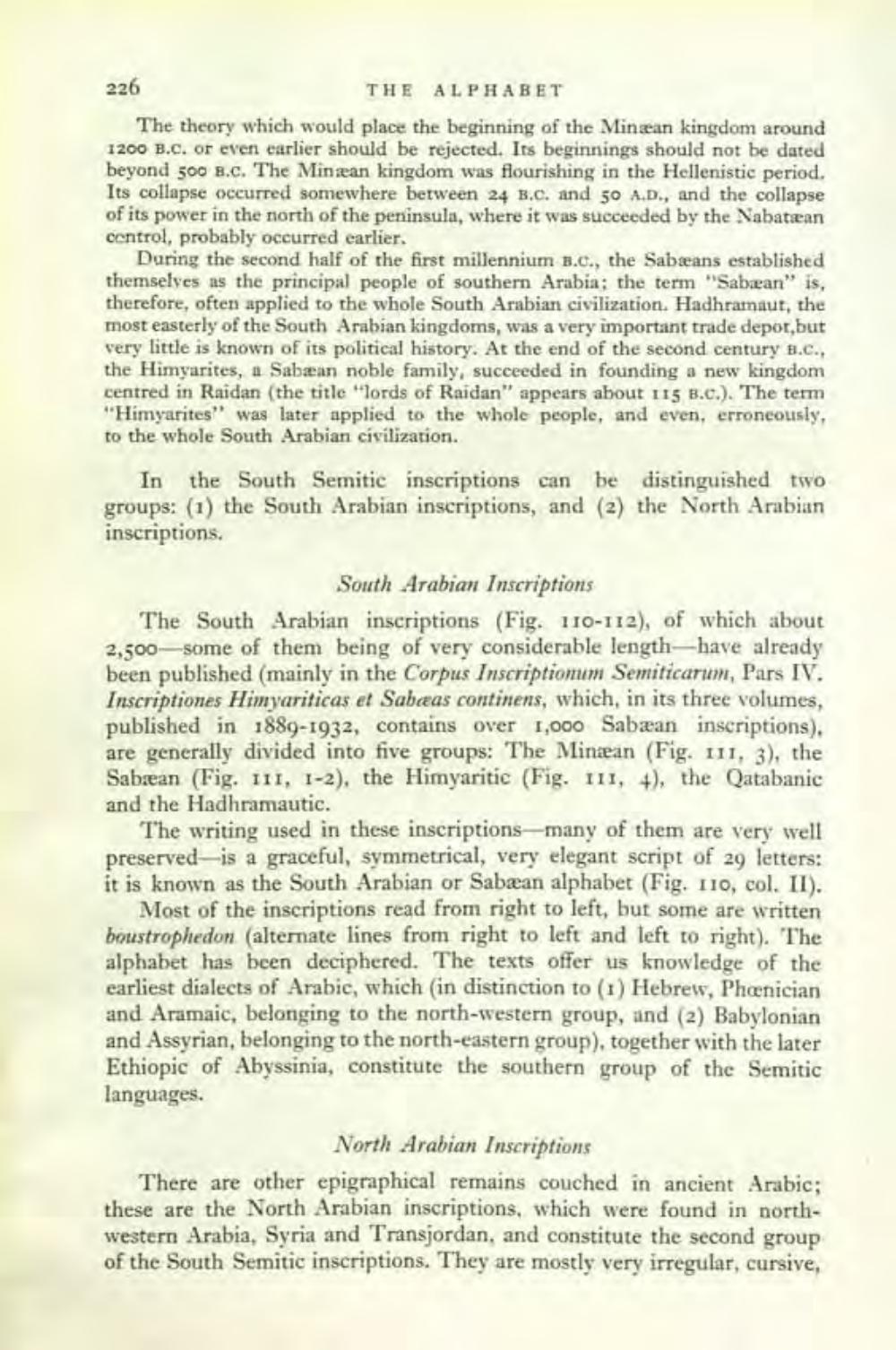________________
226
THE
ALPHABET
The theory which would place the beginning of the Minean kingdom around 1200 B.c. or even earlier should be rejected. Its beginnings should not be dated beyond 500 B.c. The Minean kingdom was flourishing in the Hellenistic period. Its collapse occurred somewhere between 24 B.C. and 50 A.D., and the collapse of its power in the north of the peninsula, where it was succeeded by the Nabatean centrol, probably occurred earlier.
During the second half of the first millennium B.C., the Sabæans established themselves as the principal people of southern Arabia; the term "Sabaan" is, therefore, often applied to the whole South Arabian civilization. Hadhramaut, the most easterly of the South Arabian kingdoms, was a very important trade depot,but very little is known of its political history. At the end of the second century B.C., the Himyarites, a Sabæan noble family, succeeded in founding a new kingdom centred in Raidan (the title "lords of Raidan" appears about 115 B.C.). The term "Himyarites" was later applied to the whole people, and even, erroneously, to the whole South Arabian civilization.
In the South Semitic inscriptions can be distinguished two groups: (1) the South Arabian inscriptions, and (2) the North Arabian inscriptions.
South Arabian Inscriptions
The South Arabian inscriptions (Fig. 110-112), of which about 2,500-some of them being of very considerable length-have already been published (mainly in the Corpus Inscriptionum Semiticarum, Pars IV. Inscriptiones Himyariticas et Sabeas continens, which, in its three volumes, published in 1889-1932, contains over 1,000 Sabæan inscriptions), are generally divided into five groups: The Minæan (Fig. 111, 3), the Sabran (Fig. 111, 1-2), the Himyaritic (Fig. 111, 4), the Qatabanic and the Hadhramautic.
The writing used in these inscriptions many of them are very well preserved is a graceful, symmetrical, very elegant script of 29 letters: it is known as the South Arabian or Sabæan alphabet (Fig. 110, col. II). Most of the inscriptions read from right to left, but some are written boustrophedon (alternate lines from right to left and left to right). The alphabet has been deciphered. The texts offer us knowledge of the earliest dialects of Arabic, which (in distinction to (1) Hebrew, Phoenician and Aramaic, belonging to the north-western group, and (2) Babylonian and Assyrian, belonging to the north-eastern group), together with the later Ethiopic of Abyssinia, constitute the southern group of the Semitic languages.
North Arabian Inscriptions
There are other epigraphical remains couched in ancient Arabic; these are the North Arabian inscriptions, which were found in northwestern Arabia, Syria and Transjordan, and constitute the second group of the South Semitic inscriptions. They are mostly very irregular, cursive,




